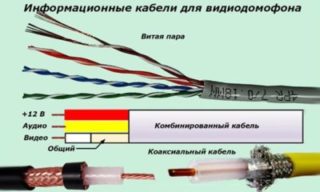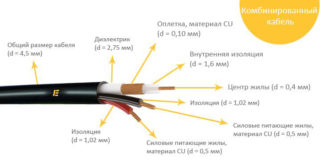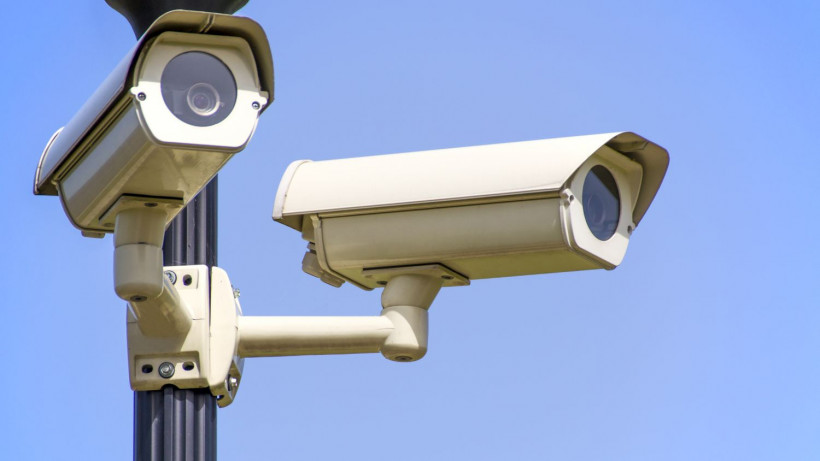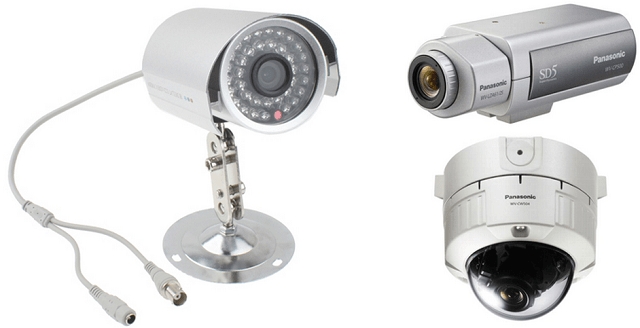Video intercom is a system that allows you to talk to visitors, open a door or deny entry from a distance. It consists of devices that provide image and sound transmission and wires connecting these elements. The cable for the video intercom must be selected carefully, as it determines the quality of the device.
- Cable Features
- Basic requirements for the video intercom cable
- Video intercom cable with electromechanical lock
- Video intercom cable 4-wire
- Cable for connecting video intercom and outdoor panel
- Materials for making
- Varieties of cables
- Coaxial cable RK-75
- Combined cables KBK
- Twisted pair
- ShVEP cable
- Cable selection
- Connection features
Cable Features
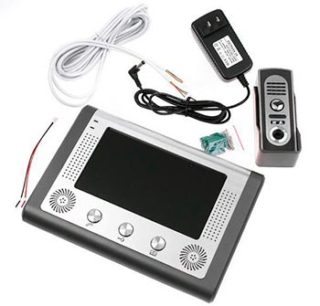
Any wire consists of 2 elements:
- Conductor - made of copper or aluminum wire, it transmits electrical current.
- Insulation - sheath. Prevents mechanical damage to the core, protects against moisture and sunlight, prevents the influence of external interference, shields the conductive core.
The insulation is determined by the type of doorphone and the installation method. If the wires are laid inside a building, especially in a private house, only one requirement is imposed on them: to reliably protect the consumer from electric shock. But if the cable is installed outdoors, they choose the option with a polyethylene sheath.
Noise immunity, provided by the metal braiding of the core - the screen.
Basic requirements for the video intercom cable
Laying the wire for the VCR is one of the construction work, so the requirements are strictly regulated:
- since the electromagnetic field created by the wire affects the operation of the devices, only shielded cables are taken for the system;
- the greater the distance between the common calling panel and the subscriber panel, the larger the cross-section must be;
- the insulation must be intact. Areas with damaged skin must be replaced immediately;
- the worse the weather conditions in the area, the higher the level of protection should be.
You need to use wires that exactly match the type of intercom and installation conditions.
Video intercom cable with electromechanical lock
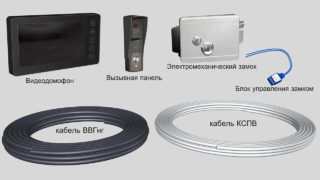
An electromechanical or electromagnetic lock can be connected to the video intercom. The first is safer: in the absence of electricity, the door remains closed. The electromagnetic lock requires constant power supply and stops working when the current is cut off.
If the electronic lock is connected to the intercom, it is necessary to provide it with current, since the usual battery from the subscriber unit will not be enough. As a cable for a household video intercom with an electromechanical lock, the same wire is used - of the UTP type. It is better to choose the option in which the wires through which the current is supplied were from two twisted cores.
To power the electric lock, you need a voltage of no more than 24 V.
Video intercom cable 4-wire
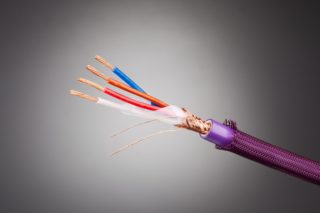
For such a device, only a 4-wire version is required: 2 conductors provide sound transmission, 2 - images. If the wire is laid in the house, a foil-shielded cable can be used. If the line is laid on the street, a coaxial one is needed.
The cable includes 4 conductors and a screening sheath. It is located coaxially with the conductor and is separated by an insulating polymer - polyethylene or polypropylene.The structure is complex: a copper or steel conductor is insulated with a polyethylene layer, covered with foil and braid of copper or aluminum. The last layer is rubber or plastic insulation.
It is recommended to take coaxial wires for an intercom in a private house or in an apartment if the distance between the elements of the system is small.
Cable for connecting video intercom and outdoor panel
- For short distances - up to 20 m, take a twisted pair. It consists of 2 conductors twisted together and insulated with a polyethylene sheath.
- For a distance of up to 40 m, it is convenient to use a combined conductor.
- Coaxial cables are suitable for distances up to 50 m.
- If the distance is greater, the coaxial is combined with a separate supply wire.
Cables from reputable manufacturers are preferred.
Materials for making
On the market there are structures with copper and steel copper-plated conductors. The former transmit the signal more reliably and better. Steel conductors are poorly clamped, corrode and deteriorate faster.
For external insulation, foam / light-resistant polyethylene, propylene, polyvinyl chloride are used.
Varieties of cables
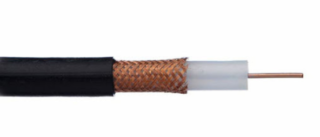
For an ordinary video intercom, you need a cable that transmits the video signal to the subscriber device, as well as a power cable. They are selected according to technical requirements.
Coaxial cable RK-75
This is the main option for analog image transmission. Characteristic impedance - 75 ohms. It is durable, inexpensive, but tough. For connecting to devices, a crimp connector is needed. It costs more.
It is better to take the wire for the video intercom in a foamed polyethylene sheath. It can be bent.
Combined cables KBK
A structure with a PVC shell is laid inside the building. For outdoor installation, models with foam insulation are taken. They can be buried in the ground, but inside a metal or plastic pipe. Installation of the overhead line is allowed - on a steel cable for support.
For installation in different conditions, select the appropriate KBK brand.
Twisted pair
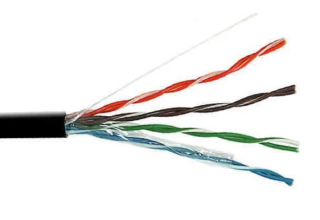
Used when servicing digital devices. Consists of 1, 2, 4 and more lines. Each one consists of 2 solid conductors, twisted with a certain pitch. Many modifications of "twisted pair" are produced:
- UTP - wire without screen;
- FTP - there is a common foil screen;
- STP - each pair of wires is protected by its own shield;
- SFTP - each pair is protected by a shield, and the entire bundle is isolated by a common shell;
- U / FTP is general shielded protection.
ShVEP cable
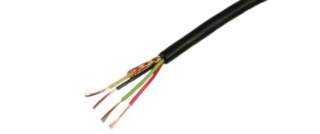
The wire is specially designed for intercom. It can transmit video signal, supply power and provide electronic lock control. Designed for outdoor installation and has reliable protection. Includes several stranded wires, one of which is protected by its own shield.
ShVEP is used when laying communications at a distance of up to 60 m.
Cable selection
What cable is needed for the video intercom is determined after evaluating the following parameters:
- distance between the monitor and the call panel;
- installation conditions - inside the house, on the street, underground, by air;
- the amount of electrical noise - if the wire runs in a room with a large amount of equipment, a shielded version is needed;
- temperature - with a large temperature difference, a model with polyethylene insulation is needed.
KVK cables are the most famous of domestic products. The design is specially designed for intercom service and is suitable for any installation method. The option is versatile and reliable.
Coaxial cables from Cavel, Belden, CommScope differ in quality. Choose models marked RG-6 or RG-59. The number indicates the thickness of the insulating layer - 6 and 5.9 mm. The wire provides image transmission in the temperature range from -60 to +120 C.
Connection features
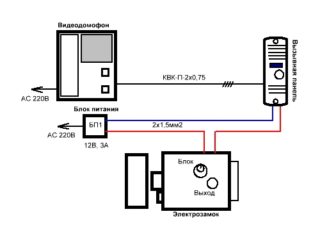
There are several features of connecting a conductor for a video intercom:
- Connect the wires through the screw terminals.
- Through the foundation, walls or column of the fence, the wire is passed through a protective sleeve.
- Do not lay the conductor for the intercom next to the 220 V power cable in one plastic cup.
- When several lines are installed in parallel, the distance between them should be at least 10 cm.
- Immediately before connecting, remove the sheath from the end. For reliability, they are crimped with tips.
- On the reverse side of the call panel case, there are wires with different colors and corresponding markings. The cores are connected to each other according to a certain scheme by crimping. The joints are insulated with thermal tubes.
It is recommended to connect the devices with one piece of cable. The fewer twists, the higher the signal quality.

